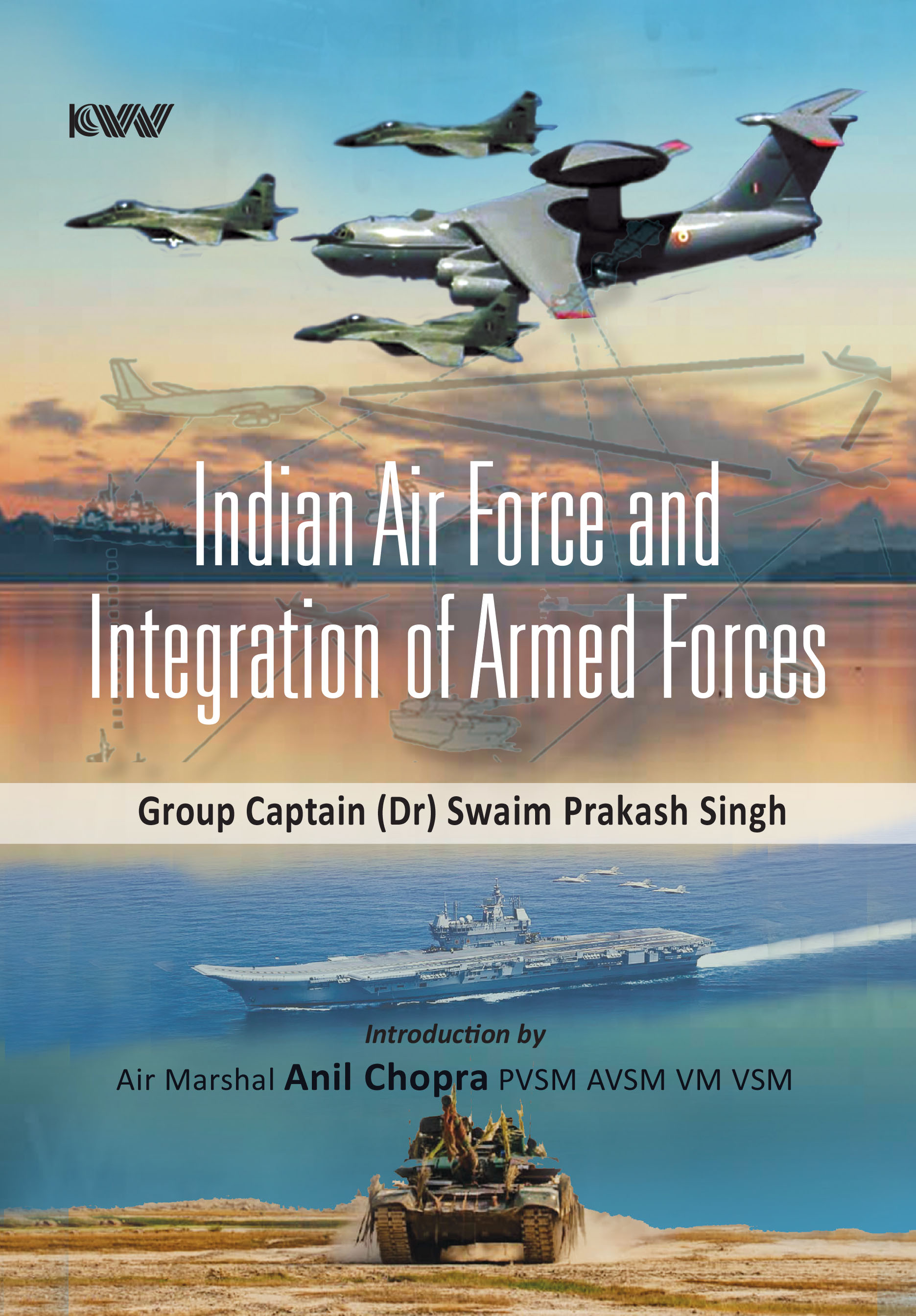Subjects
Recent View(s)
Indian Air Force and Integration of Armed Forces
Group Captain (Dr) Swaim Prakash Singh
The book is a diligent and painstaking effort to document the challenge of Integrating the Armed Forces. The author gives us deep insights into the issues at hand and analyses the way ahead with panache. A must read. It will help to propel the journey of the Indian Defence Establishment to jointness and beyond combat integration, cross-pollination and ultimately to dissolution of all silos: complete civil-military fusion.
— Lieutenant General Raj Shukla PVSM YSM SM (Retd)
Member UPSC and Former GOC-in-C Army Training Command
A seminal work on the much needed integration of the Indian Armed Forces. Must read for all those in uniform.
— Air Vice Marshal Anil Golani (Retd)
Additional Director General,
Centre for Air Power Studies, New Delhi
A useful addition to the military literature on jointness and integration. One hopes the Services do transition from the situation where “my shibboleths hold more water than yours” to “let’s get over our own shibboleths.”
— Rear Admiral Sudarshan Shrikhande AVSM (Retd)
Adjunct Faculty, Naval War College and Editor-in-Chief, Indian Naval Despatch
This study, now available as a book, is an extremely valuable addition to the current debate and discussion around the plans in the Indian military to achieve jointness, integration and achieving the ultimate aim of joint theatres. Although an Air Force officer, the author has managed to take on board viewpoints that the Army and the Navy have on the path to theaterisation. A must-read for students of military planning and future wars.
— Nitin Gokhale
Author, Journalist, A thought leader, South Asia’s leading Strategic Analyst and Founder of digital platforms - BharatShakti.in and StratNewsGlobal.com
At a time when defence reforms in India are gaining pace, there is a need to understand and critically assess the role of individual Services even as integration seems to have become the new buzzword. This book situates the role of air power in the wider context of the need for integration in the armed forces and underscores some of the key challenges in the move towards greater jointness. This is a welcome addition to an emerging body of work on Indian armed forces and their ability to achieve national objectives. It should, of course, be read by air power enthusiasts, but more important, perhaps, it should be read by the Indian Army and the Indian Navy.
— Prof Harsh V Pant
Professor of International Relations at King’s College London and Vice President for Studies, Observer Research Foundation, New Delhi
Information systems and its management is of utmost importance to airpower and conflicts in general. While analyzing the dynamics of airpower, Group Captain (Dr) Swaim Prakash Singh brings his professional experience and a scholarly approach to think anew about the problems and prospects of Indian Airpower. His analysis of the Airborne Warning and Control System (AWACS) and their utility in air operations is incredibly masterful and qualifies this as a required reading for military professionals.
— Anit Mukherjee
Senior Lecturer, Kings College, London
Book
The year 2022 witnessed the platinum celebrations of India’s Independence and the completion of nine decades of the Indian Air Force (IAF). During this opportune time, the book ‘Indian Air Force and Integration of Armed Forces’ is an attempt to provide nuanced and professional input before the awaited theaterisation concept rolls out in the Indian context. This research is an effort to put the IAF and air power in perspective, based on their merit and ability to achieve the military’s and nation’s objectives faster and with ease. By harnessing the potential of air power, nations can secure their interests, deter aggression, and shape the battlefield to their advantage.
In very simple words, the book explains the evolution and understanding of air power more so in the Indian context. The book is divided into three sections- Air Power, Integration of Armed Forces and an Afterthought.
Section I describe air power in theory and further amplifies it through various examples in the Indian context, wherein it decisively shaped the outcome of wars. It also highlights in detail how the Airborne Warning and Control System (AWACS) acts as an Orchestrator of Air Operations. The author focuses on the immediate need for integrated, secure, net-centric air operations, how this will support future air and surface battles with multiplier effects and views on doctrinal changes.
Section II dwells upon the integration issues among the Services and provides an issue-based perspective and solutions to make the integration work successfully in the interest of the nation. It provides a candid analysis of all issues and perceptions about air power with the ground and the maritime forces. The section highlights the need for an outlook on achieving similar technological capability among the three Services.
Section III is an afterthought highlighting the need for enhanced Professional Military Education (PME) and training to develop military personnel into future tech-imbued leaders. It builds the case for the urgent need to set up the Indian National Defence University (INDU) in the classical frame. The book also looks at Civil-Military Fusion at various levels and how that will likely pay more significant dividends than just integrating the armed forces.


 Political Science
Political Science
